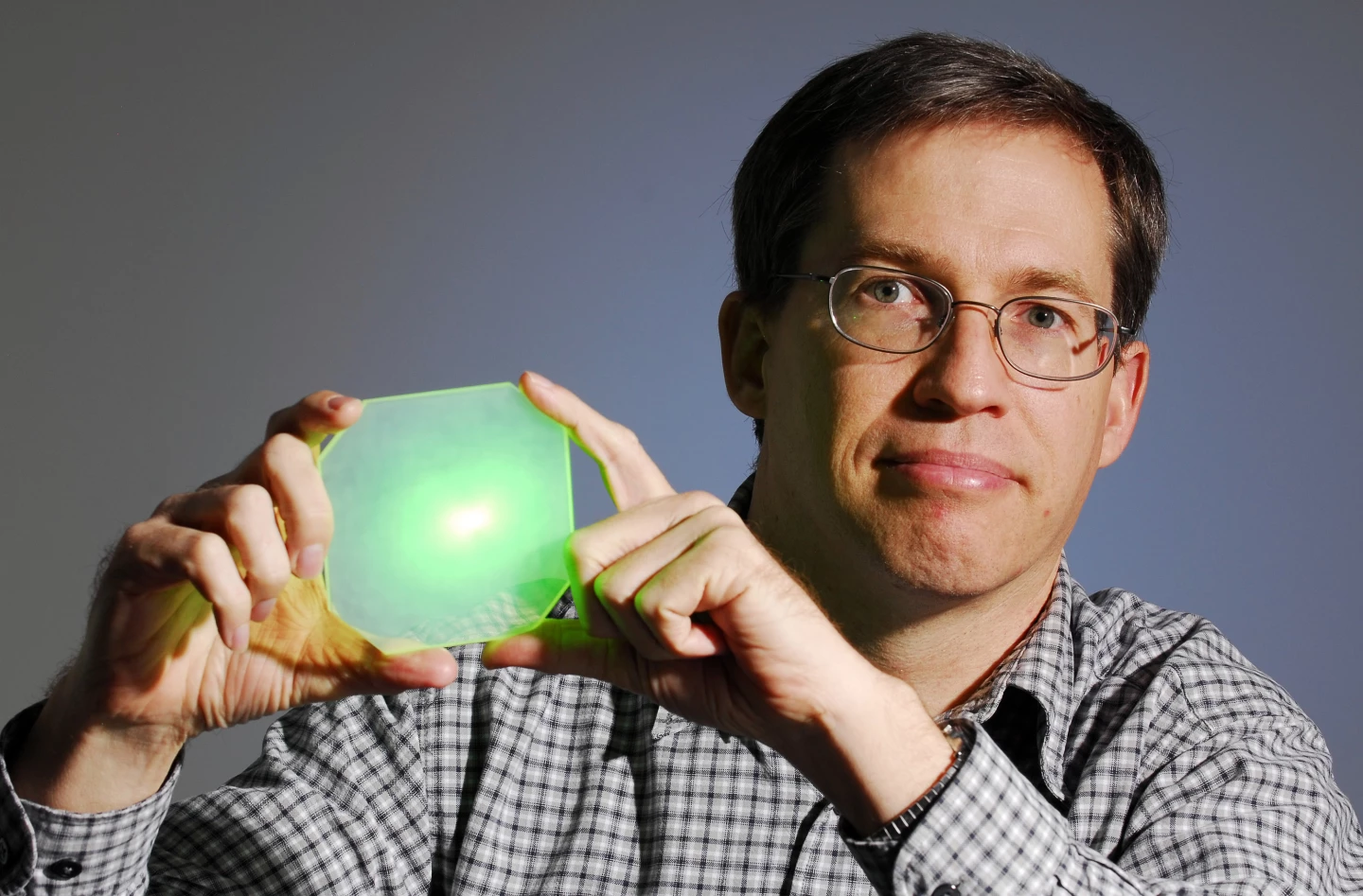Traditionally, when someone wished to measure the total power delivered by a laser beam, they had to use something called a ball calorimeter. As the laser heated the interior of the ball, temperature readings would be taken. Now, however, a system has been created that utilizes reusable glass boards. It can measure a laser's total energy along with the total power and power density anywhere inside the beam more than one hundred times per second. It should be a boon to developers of high-energy laser weapons, as it will reduce the time required for testing, and get the weapons in the field faster.
The system, which simultaneously measures a laser’s power and spatial energy distribution, was designed by researchers at the Georgia Tech Research Institute (GTRI). "The high-energy laser beam delivers its energy to a small spot on the target – only a couple inches in diameter – but the intensity is strong enough to melt steel," said GTRI senior research scientist David Roberts. "Our goal was to develop a method for determining how many watts of energy were hitting that area and how the energy distribution changed over time so that the lasers can be optimized."

To do that, GTRI partnered with Florida-based glass fabricator OptiGrate. They created a four-by-four-inch (10cm x 10cm) square board composed of photo-thermo-refractive glass, which is made from sodium-zinc-aluminum-silicate glass with added silver, cerium and fluorine. "This glass is unique in that it is transparent, but also photosensitive like film so you can record holograms and other optical structures in the glass, then 'develop' them in a furnace," explained Roberts.
For testing, one of the boards is mounted between a laser and a target. As the laser shoots through the glass board at the target, its beam irradiance profile is imaged by a remote camera. A contour map can then be created, that indicates the power density at every location where the beam hit the glass.

The prototype boards and a high-energy laser beam profiling system that uses them were delivered to Kirtland Air Force Base's Laser Effects Test Facility in May. The researchers successfully demonstrated them using the facility's 50-kilowatt fiber laser and measured power densities as high as 10,000 watts per square centimeter (without damaging the beam profiler). The system could be scaled up to utilize larger boards if needed.






